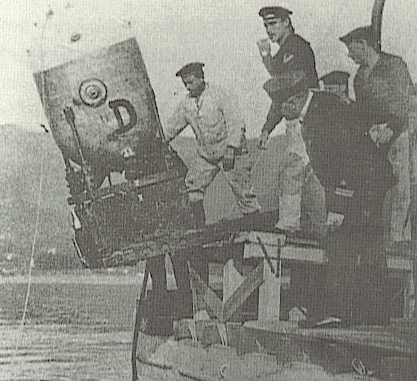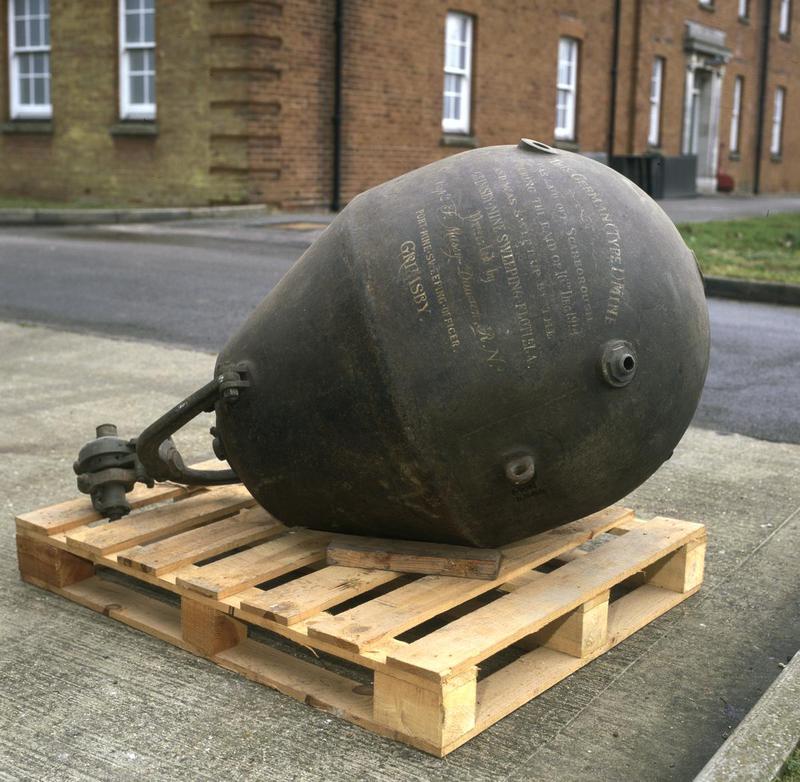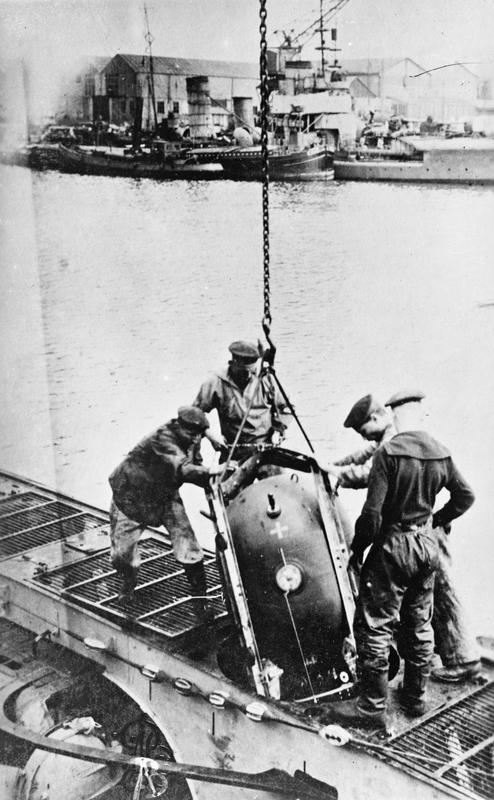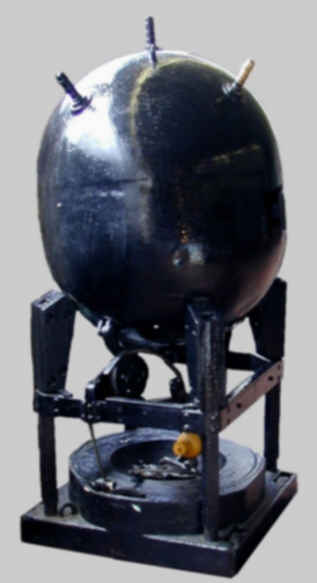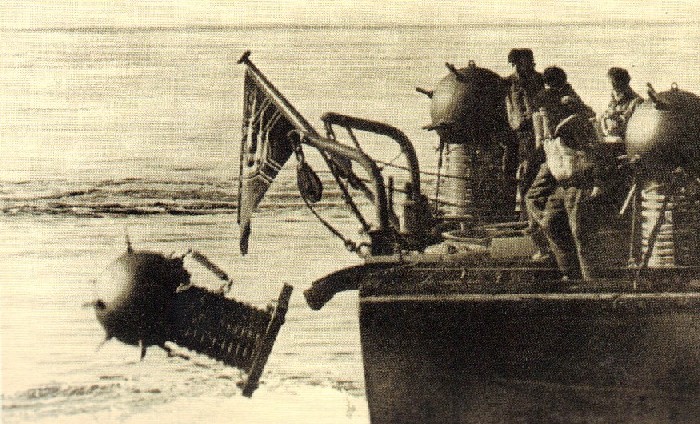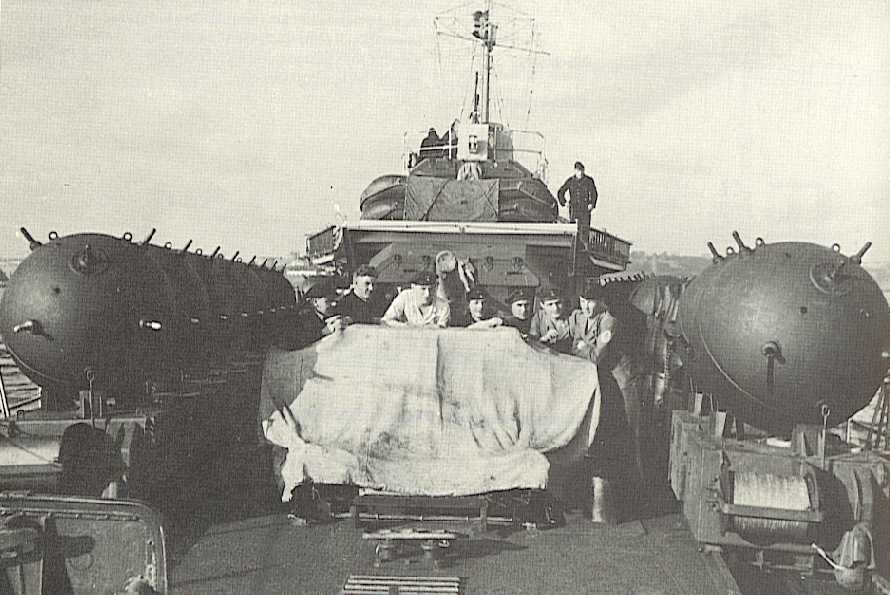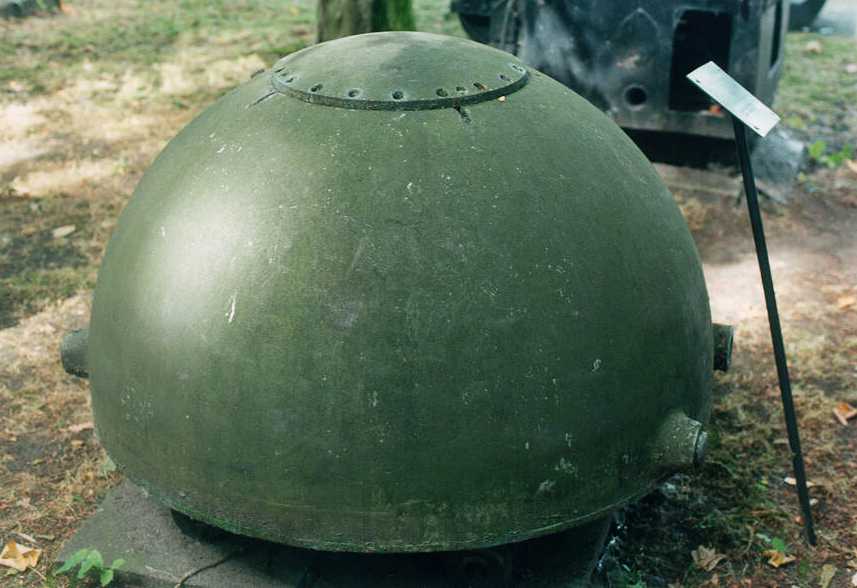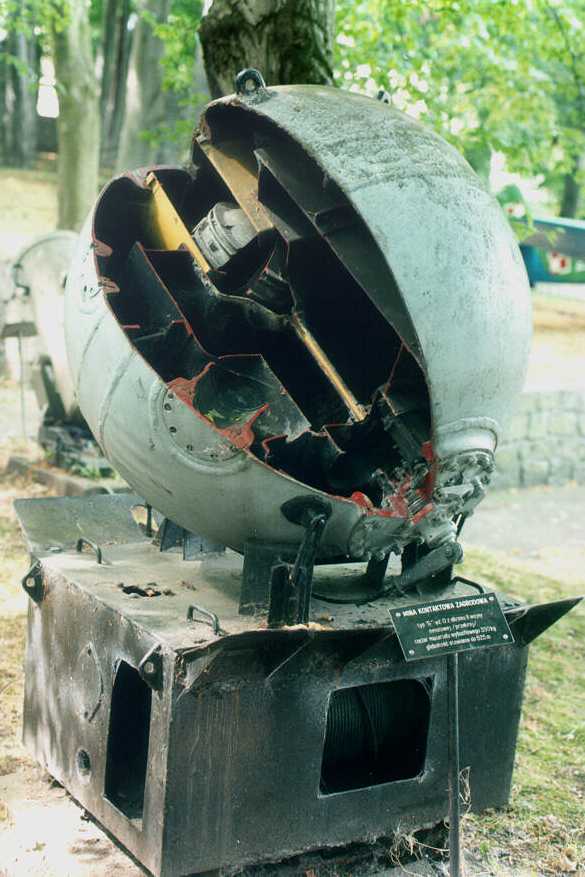| History
In the war of Schleswig-Holstein (1848-50), a mine field was planted to defend Kiel Harbor. Wine barrels were used as mine cases and held a 300 lbs. (136 kg) charge of gunpowder. These were controlled by a shore installation, which had a wet battery for each mine to heat a platinum wire placed in the middle of the charge. The Danes learned of this field and made no attack on Kiel, but it is not known how much if any effect the existence of the mine field had on their decision. In the Austria-German War of 1866, the coasts of Istria and Dalmatia were defended by fairly dense mine fields. In 1868, the Hertz horn was invented (see British Mines and USN Mines) and by 1914 these had become the most reliable way to detonate contact mines. During the Franco-German War of 1870, the Jode, Elbe and Weser rivers were defended by mine fields. Soon after the war and union of the German states, Germany began a large mine development program and by the time of World War I was well able to wage mine warfare. Large stocks of reliable Hertz horn contact mines were available, all equipped with automatic anchors that used hydrostats to set mine depth and lock the mooring cables. Most of her capital ships and cruisers as well as many destroyers and auxiliary vessels were able to lay mines. On-going research included a program for laying mines via U-boats. German mines had a high reputation in both World Wars for reliability and innovation. The British paid perhaps the ultimate compliment in 1917 by copying a captured German Hertz horned mine to produce their first reliable contact mine. Following World War I, Germany established a mine warfare research and development command in 1920. Airborne mines were successfully tested in 1931 and acoustic and magnetic mines were developed before the war started. Some 1,500 magnetic mines were available in the spring of 1940, far short of the 50,000 originally ordered. Pressure mines were developed in 1943 but not used until the night of 6-7 June 1944 in the Normandy invasion area. This late deployment was to avoid their capture and duplication by the Allies. However, the Allies had already developed their own but had not used them for similar reasons. German pressure mines that could not be swept were nearly ready for deployment at the end of the war. Postwar, Germany used British and USA mines until the 1960s, at which time Denmark and Germany began cooperating in developing a new generation of magnetic ground mines. Nomenclature German mines of World War II were all designated by letters, the first two indicating the function and the third the series designation within that category, usually indicating a modification. The function codes were: BM - Airborne mines laid without parachutes
During World War I, Britain classified German mines into four general types. Britain used a two letter code sequence during World War II to identify German mines, with the first letter being G (for "German") and the second letter given in a sequence as to when they were captured. Where possible, these codes are included in the tables below. |

HMS Audacious sinking on 27 October 1914
|
| Effectiveness during the
World Wars
Germany started laying operations almost as soon as war was declared with the first mine field being planted by Koenigin Louise off Lowestoff on the night of 4/5 August 1914. Koenigin Louise was sunk the next day by the British cruiser HMS Amphion, but had her revenge on the following day when one of her mines sunk Amphion. During World War I, Germany laid more than 43,000 mines which claimed 497 merchant vessels of 1,044,456 gross tons (GRT), with one source claiming that the total was 586 Allied merchant ships. The British alone lost 44 warships and 225 auxiliaries to mines. Allied losses included two British and one French pre-dreadnoughts sunk by Turkish mines during the Dardanelles campaign. For all of the Allies, losses to mines included the new battleship HMS Audacious, seven pre-dreadnoughts and six cruisers. The loss of the cruiser HMS Hampshire was especially damaging, as the casualties included the British Secretary of War, Lord Kitchener. The British and Russians lost at least eight submarines to mines with the possibility that some of the six Russian and ten British submarines that disappeared without a trace during the war were also sunk by mines. Several U-boats were fitted as mine layers and one of these planted a field off the east coast of the USA which claimed the armored cruiser USS San Diego (ACR-6). In World War II, some 534 merchant vessels of 1,406,037 GRT were sunk by German mines. At least ten UK and US destroyers were sunk by German mines, but the only major Allied warship sunk was the cruiser HMS Neptune and the mines that sunk her were actually deployed by Italian ships. The peak success came in 1939-1940, when German aircraft, destroyers and minelayers were actively laying minefields off British harbors and no counter-measure against the magnetic mine had yet been developed. However, the greatest single success ever achieved by a minefield was by the one laid off Cape Juminda in the Gulf of Finland. This field inflicted great damage to the Soviet forces withdrawing from Tallinn (Reval) in August 1941. Out of the 195 warships, transport vessels, auxiliaries and 23,000 people that evacuated Tallinn, 53 ships and 4,000 lives were lost en route. Among the ships sunk were 25 out 29 of the larger transports, five destroyers, two corvettes, two submarines and two patrol boats. Some 2,828 German and Finnish moored mines were laid, mostly contact types along with some antenna types. In addition, about 1,500 explosive anti-sweeping devices were deployed in this field. Triggering or Fuzes As mentioned above, the Germans had reliable Hertz horned contact mines for much of World War I. Magnetic, acoustic and pressure mines were developed during World War II. The magnetic mines were fired by a change in the vertical field strength and were continually improved during the war. Various mechanisms were incorporated to prevent the mine from detonating until after a predetermined number of actuations occurred or a fixed time had passed. Post-war mines have a variety of acoustic, magnetic and hydrodynamic/pressure sensors. Explosives The standard explosive fillings for World War II mines were SW18 and SW36, while S16, S18 and SW36 were used in the airborne mines. See the German torpedo information datapage for a description of SW18 and SW36. S16 was 31.4% ammonium nitrate, 5.9% sodium nitrate, 2.3% potassium nitrate, 9.7% cyclonite, 10.1% ethylene diamine dinitrate, 0.6% TNT and 40% aluminum. Information on the kind of explosives used for World War I mines and post-World War II mines is not available at this time. The former were possibly TNT-hexanitrodiphenylamine mixtures, similar to torpedo explosives of that time. |
